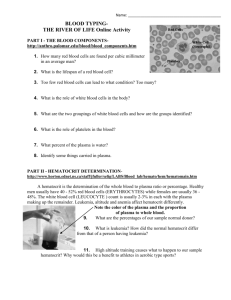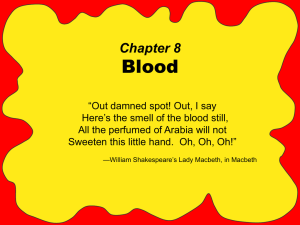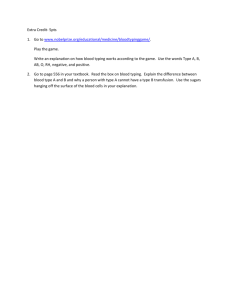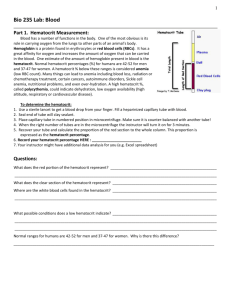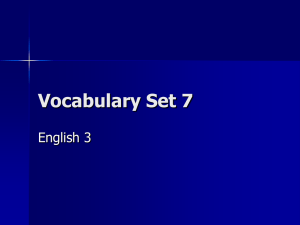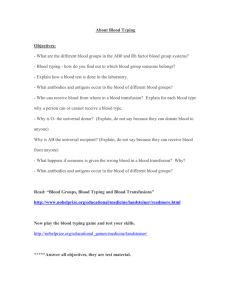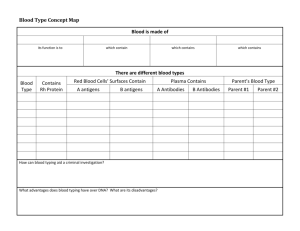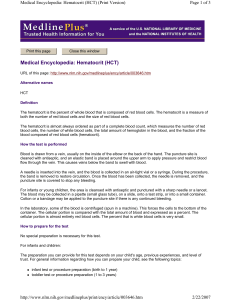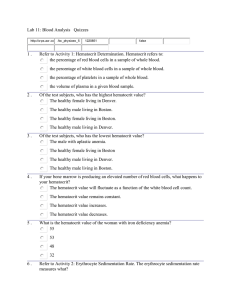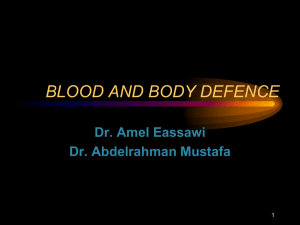Blood Typing, Hct
advertisement
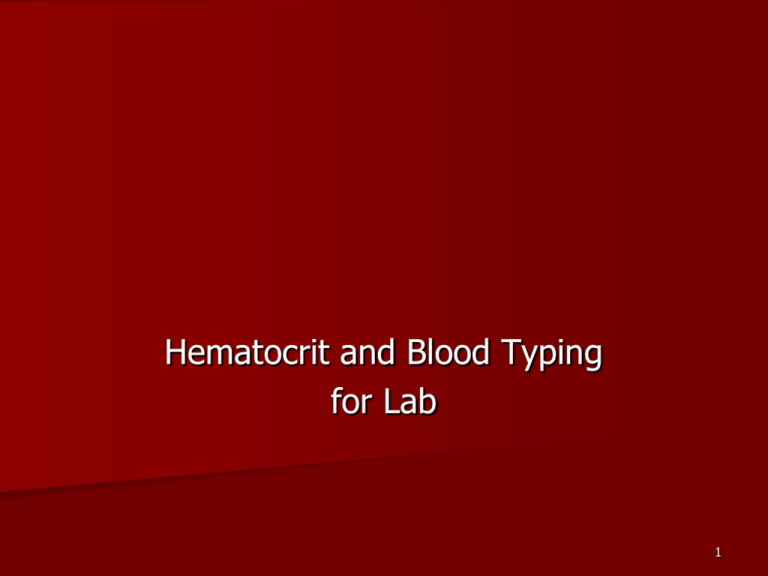
Hematocrit and Blood Typing for Lab 1 Hematocrit A quick screening test for anemia is the hematocrit. A drop of blood is drawn up a small glass capillary tube and the tube is centrifuged to pack the red blood cells at the bottom with the plasma on top. Hematocrit measures the percentage of blood volume that consists of erythrocytes. The hematocrit is the ratio of packed red blood cells to total blood volume. Normal is about 45% (46% for men and 38% for women.) 2 Overview: Composition of Blood Figure 17.1 3 4 Hematocrit Use a ruler to measure both brackets. Take the smaller number and divide by the larger number. Multiply by 100. 5 BLOOD TYPING: The ABO SYSTEM Blood typing is the technique for determining which specific protein type is present on the RBC membranes. Only certain types of blood transfusions are safe because the cell membranes of the red blood cells carry certain types of proteins that another person’s body will think is a foreign body and reject it. 6 BLOOD TYPING These proteins are called antigens (something that causes an allergic reaction). There are two types of blood antigens: Type A and Type B. A person with Type A antigens on their blood cells have Type A blood. A person with Type B antigens have Type B blood. A person with both types has type AB blood. A person with neither antigen has type O blood. 7 8 BLOOD TYPING If a person with type A blood gets a transfusion of type B antigens (from Type B or Type AB, the donated blood will clump in masses (coagulation), and the person will die. The same is true for a type B person getting type A or AB blood. Type O- blood is called the universal donor, because there are no antigens, so that blood can be donated to anyone. Type AB+ blood is considered the universal acceptor, because they can use any other type of blood. This blood type is fairly rare. The rarest blood type is AB negative. 9 RH FACTOR There is another term that follows the blood type. The term is “positive” or “negative”. This refers to the presence of another type of protein, called the Rh factor. A person with type B blood and has the Rh factor is called B positive. A person with type B blood and no Rh factor is called B negative. 10 RH FACTOR The reason this is so important is that if an Rh- mother has an Rh+ fetus in her womb (from an Rh+ father), her antibodies will attack the red blood cells of the fetus because her body detects the Rh protein on the baby’s red blood cells and thinks they are foreign objects. This is called Hemolytic Disease of the Newborn (HDN). 11 Blood Type Kit Put 2 drops of blood in each well. Add 2 drops of anti-A fluid to well “A”. Stir with toothpick. If it clumps, then “A” proteins are present. Clumps look like little snowflakes. Repeat with anti-B and anti-Rh fluid. This is blood type B negative. 12 Blood Type Kit Results 1: 2: 3: 4: A+ BAB+ O- Clean the plates and put them back in the kit. Throw out the toothpicks. 13
